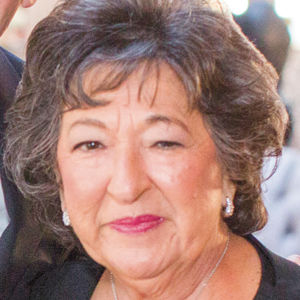Generations of artists, and of grateful art fans
Published June 4, 2020
Earlier this year, while watching the hockey all-star game and seeing the sons of famous players play, I thought about how so often, those great athletic genes are passed on to the next generation.
A couple of months ago, I saw a Betye Saar exhibition at the Los Angeles County Museum of Art in Los Angeles and remembered that I had seen an art show that Saar and her daughter Alison Saar did together. The Saars are a formidable artistic family spanning two generations whose works fearlessly examine issues of identity and culture.
Thinking about famous artistic families in all genres, I realized that those art genes can also be very strong.
We’ve all heard of Judy Garland and her daughter Liza Minelli; actors Kirk and son Michael Douglas; the multigenerational acting Barrymores; the multigenerational American visual artists the Wyeths; and, of course, Debbie Reynolds and her daughter Carrie Fischer, and Ingrid Bergman and her daughter Isabella Rosselini.
And did you know that Fred Astaire, the most widely influential dancer in the history of film, started in his early years with his sister Adele in a brother-sister dance act? Sammy Davis Jr. became famous dancing with his father and uncle. The list is never-ending.
Dating back to the Renaissance, artists generally looked to their sons, not their daughters, to apprentice in their workshops and continue the family business. An established client base could easily be transferred to a male heir, who could retain the branding legacy of the father’s last name and enjoy a career uninterrupted by childbirth and domestic duties. For instance, Venetian painter Giovanni Bellini trained in the workshop of his father, Jacopo Bellini, while Florentine artist Filippino Lippi studied with his dad, Fra Filippo Lippi.
Though it was far less common for daughters to learn their fathers’ trades, it did happen. Indeed, women have trained in their fathers’ studios from the early Renaissance to the present. An example is Suor Antonia Doni, who trained with her father, an early Renaissance Italian painter, and became a nun in order to get commissions from her chosen Carmelite order.
Before 20th century art historians revived interest in Artemisia Gentileschi, many of her paintings were either attributed to her father or ignored by scholars. While Artemisia began her career as an apprentice to her father, Orazio Gentileschi, she quickly progressed to having a successful independent career painting biblical stories from a woman’s perspective. She later passed on the family love of painting to her daughter Prudentia.
In St. Louis. we have well-known artistic families such as the LeFlores. Floyd LeFlore was a well-known musician, and his wife, Shirley Bradley Leflore, was St. Louis’ poet laureate. She even has a room dedicated to her at the High Low in Grand Center. Daughter Lyah LeFlore is well-known as a writer, television producer and director on a national level.
Before the pandemic, I heard Treasure Redmond, poet, speaker and social justice educator, read at the High Low. Redmond continues in her family’s artistic vein. Her father is the beloved Eugene Redmond, East St. Louis’ poet laureate.
I also heard Ben Wheeler, who is following in the footsteps of his dad and brother, play the bass at the Dark Room at the Grandel Theater. Wheeler has played with such St. Louis jazz legends as Dave Stone and the late Willie Akins. He is a bandleader and composer as well.
My husband, Ken, and I are thrilled to pass on the love of the arts to our children and grandchildren.
For more of Nancy Kranzberg’s commentary, listen to KWMU (90.7) St. Louis on the Air the first Friday of each month at approximately 12:50 p.m. She also hosts a weekly Arts Interview podcast for KDHX (88.1), available at artsinterview.kdhxtra.org.















